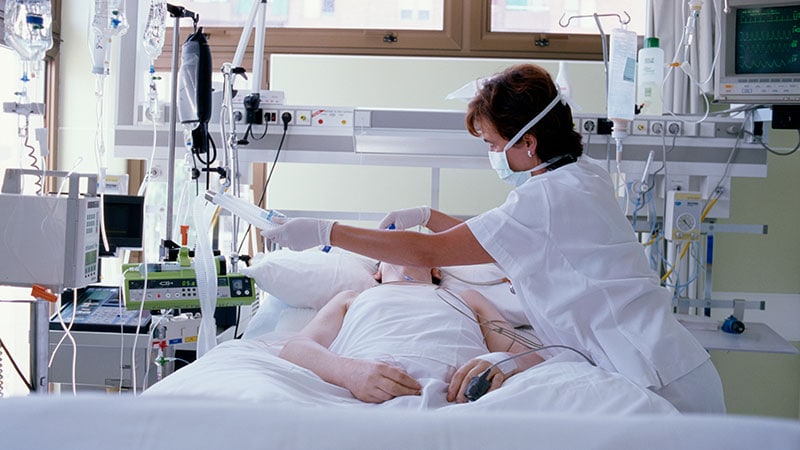Neonatal Abstinence Syndrome Declined in BC During Pandemic
Neonatal abstinence syndrome (NAS) increased in British Columbia (BC), Canada, prior to the pandemic, then decreased across both urban and rural locations in the first 2 years of the pandemic, new research suggested.
The cross-sectional study of more than 514,000 live births showed a relative increase in the NAS rate of 0.5% per month from 2010 to 2020, and a 1.3% per month decrease during the pandemic (June 2020-March 2022). The results were "unexpected because studies have documented increased opioid use during the pandemic," the authors noted. However, the increase was not matched by a continued increase in NAS.
The study was initiated because of the "large increase" in opioid overdose deaths during the pandemic, lead author Sarka Lisonkova, MD, PhD, of the Women's Hospital and Health Centre of British Columbia, Vancouver, Canada, told Medscape Medical News.

"This rise was so substantial that it led to discussions about a 'dual epidemic', with deaths from illicit drug overdoses outnumbering those from COVID-19. In light of this situation, we sought to investigate whether there was a corresponding increase in the rates of NAS."
The study was published online on March 8 in JAMA Network Open.
Unexpected Results
The study included registry data for 514,189 live-born infants, of which 2165 had NAS (4.2 per 1000 live births). Between fiscal years 2010-2011 and 2019-2020 (prepandemic period), NAS increased from 2.6 to 4.8 per 1000 live births.
NAS rates were highest in fiscal year 2020-2021 and decreased in 2021-2022 from 5.6 to 4.7 per 1000 live births, respectively. The direction of the temporal trend in NAS rates changed after the onset of the pandemic in June 2020.
The relative increase in the NAS rate during the prepandemic period (March 2010-May 2020) was 0.5% per month, whereas the NAS rate decreased by 1.3% per month during the pandemic period (June 2020-March 2022).
Further analyses showed no large rural vs urban or socioeconomic status differences or pandemic-related changes in preterm birth, birth weight, or hospital length of stay among infants with NAS.
"NAS symptoms may not always be severe, so clinicians should remain vigilant for signs of NAS," Lisonkova said. "Mild cases of NAS may not always be diagnosed as such but still warrant attention, particularly regarding nonmedical interventions and follow-up during infancy."
Study limitations included a lack of details on specific drugs, including treatments (eg, buprenorphine or methadone) used during pregnancy, and details on stillbirths among women with substance use. Furthermore, the data reflect only one province and may not be generalizable.
Data 'Limited'
Lisonkova declined to speculate about the possible reasons behind the unexpected findings because "more data are needed," she said. The team is in the process of obtaining additional data up to March 2023 and plans to explore temporal changes in self-reported opioid use in pregnant women in BC, as well as changes in stillbirth rates in this group. "We will also continue to monitor whether the rates of NAS have returned to prepandemic level, stabilized, or further declined."
"It would be interesting to find out if other places observed similar trends as in BC," she added.
Elaine Duryea, MD, an associate professor in the Department of Obstetrics and Gynecology at UT Southwestern Medical Center and medical director of the Maternal-Fetal Medicine Clinic at Parkland Health and Hospital System, both in Dallas, Texas, commented on the study for Medscape Medical News.

"These data, while interesting, are limited and definitely require a more in-depth and rigorous analysis before they can be meaningfully interpreted," said Duryea, who was not involved in the study. "It would be great to see more detailed data regarding maternal opioid use and trends extending past early 2022 as the effects of the pandemic abated."
She added that she is not aware of any work suggesting a similar trend in the United States or elsewhere.
This study was supported by a grant from the Canadian Institutes of Health Research; a grant to one coauthor from the Swedish Research Council for Health, Working Life and Welfare; and an Investigator Award from the BC Children's Hospital Research Institute to another coauthor.
Lisonkova and Duryea reported no conflicts.
Marilynn Larkin, MA, is an award-winning medical writer and editor whose work has appeared in numerous publications, including Medscape Medical News and its sister publication MDedge, The Lancet (where she was a contributing editor), and Reuters Health.


 Admin_Adham
Admin_Adham


